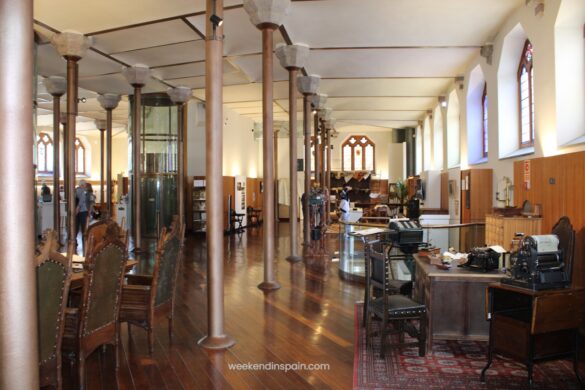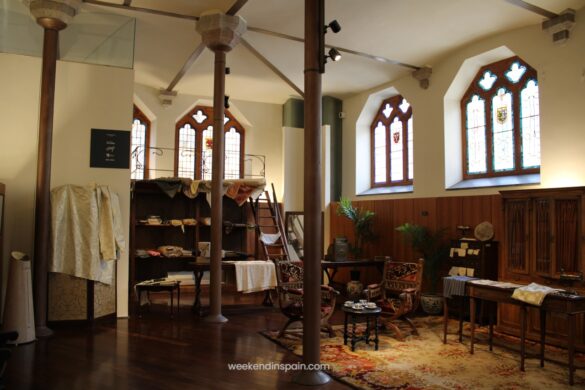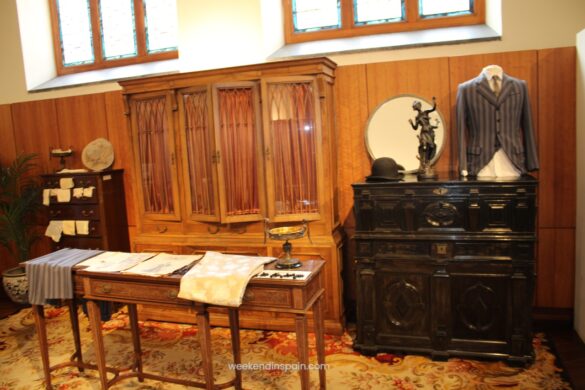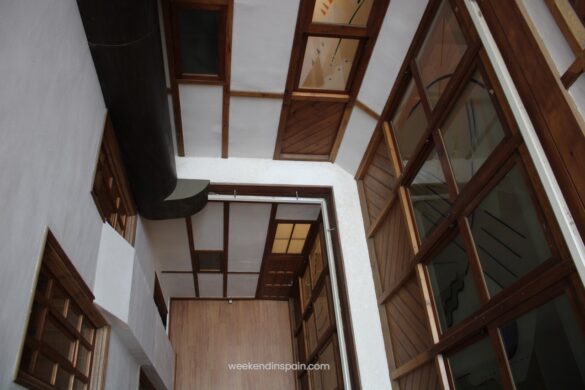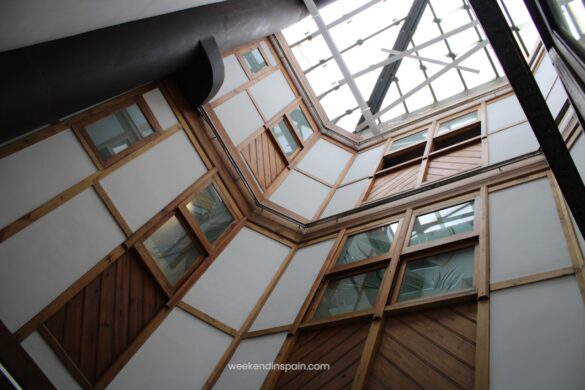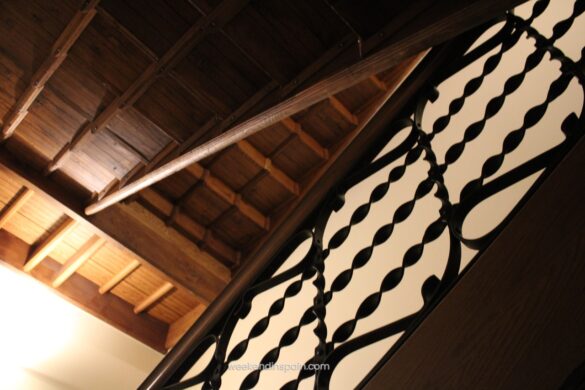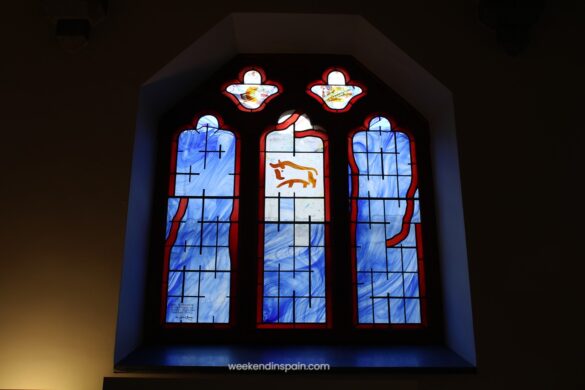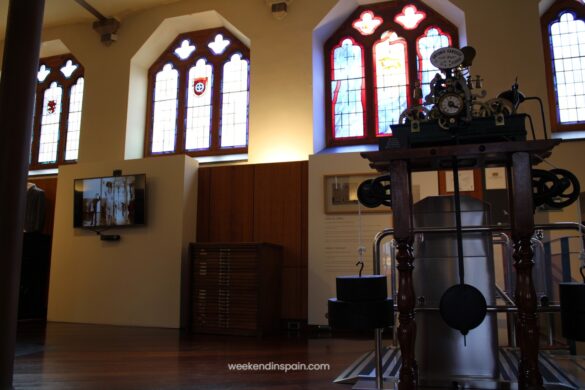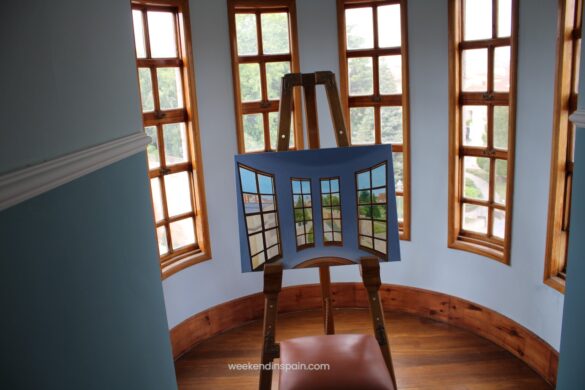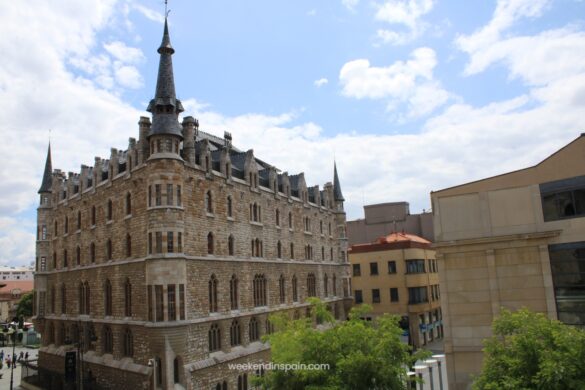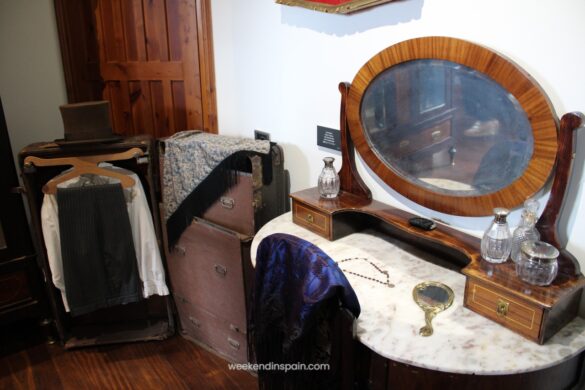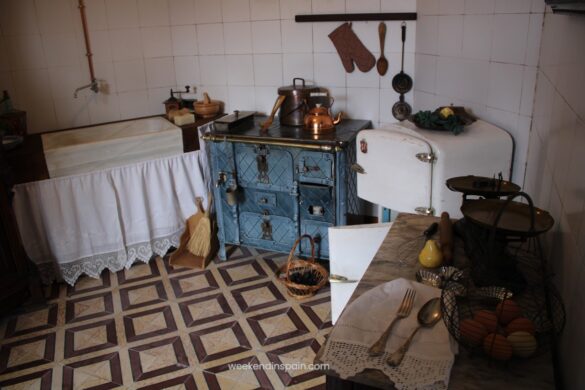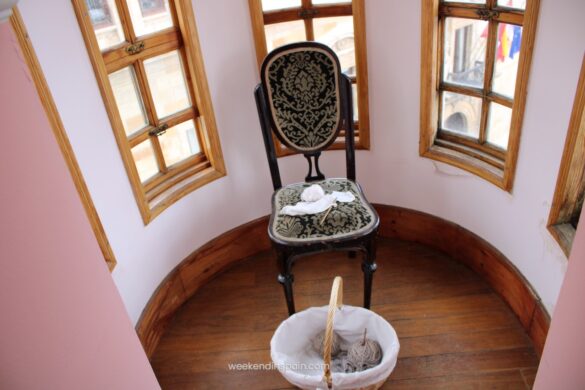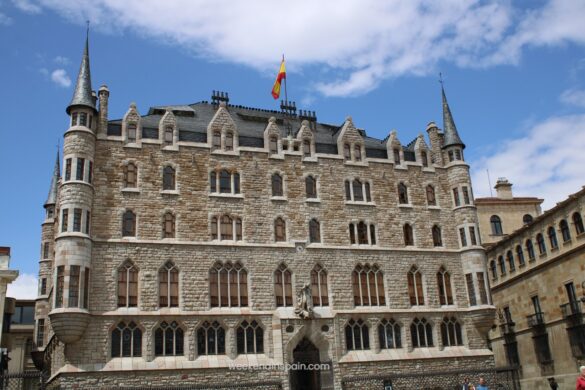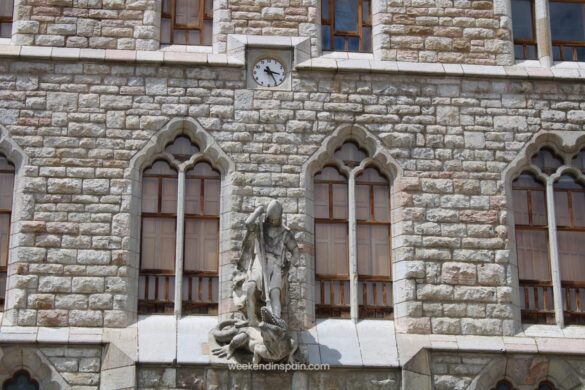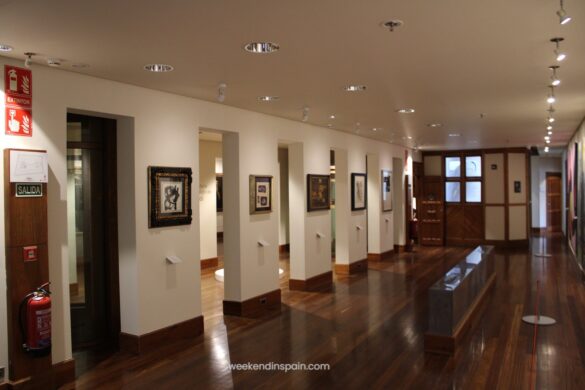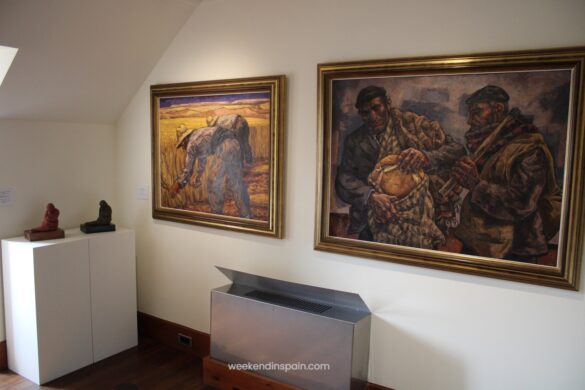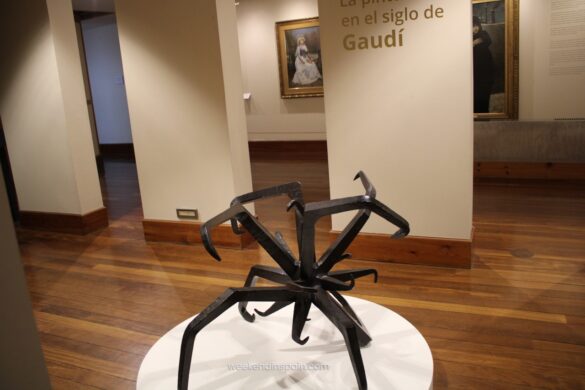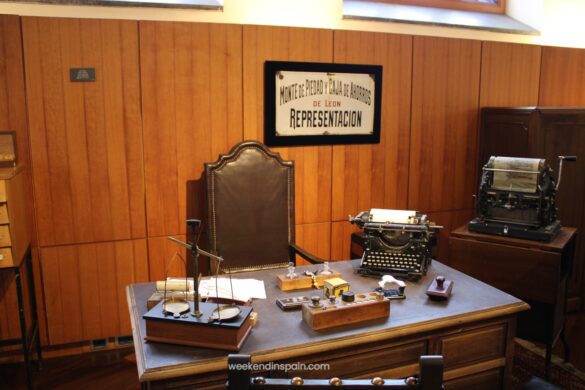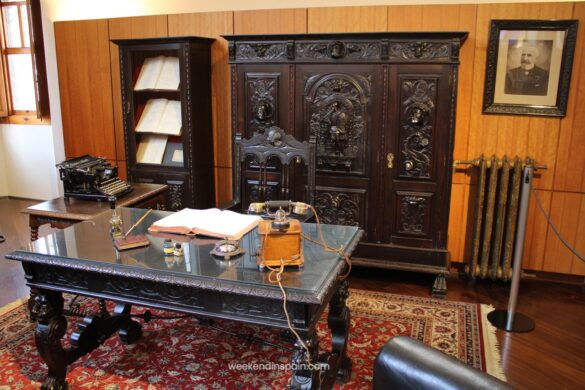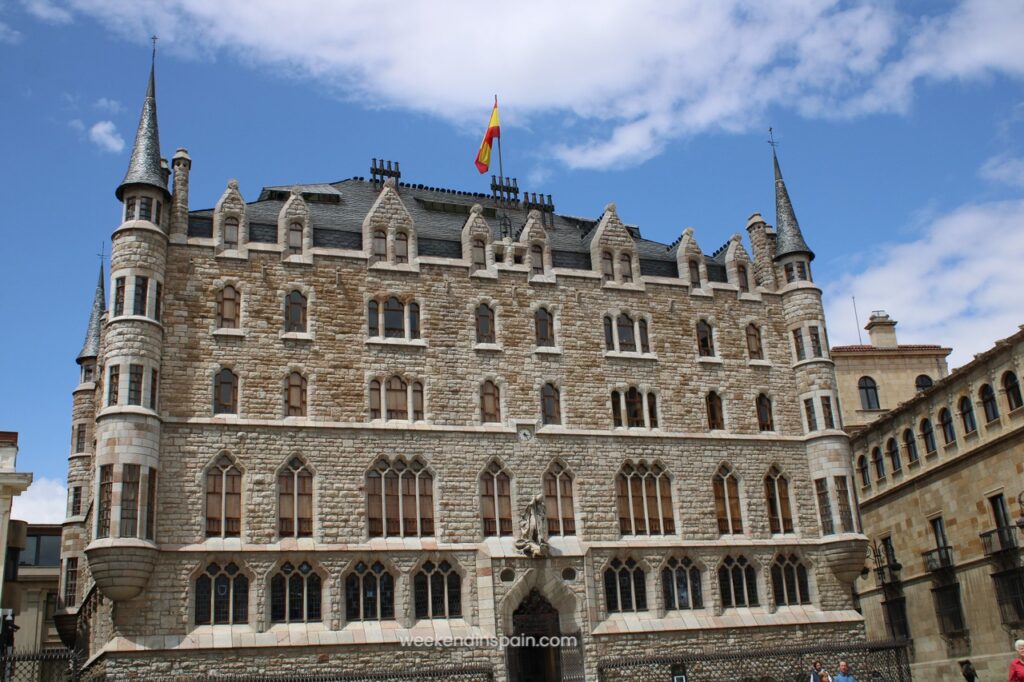
Table of Contents
CASA BOTINES 2023
Casa Botines is one of the only three buildings that Antoni Gaudí built outside of Catalonia, together with the Episcopal Palace of Astorga (in Astorga, province of León) and “El Capricho” in Comillas (Cantabria).
Casa Botines is one of the most interesting pieces of nineteenth-century architecture in Spain, whose angular towers give it the appearance of a fairytale castle.
THE HISTORY OF CASA BOTINES
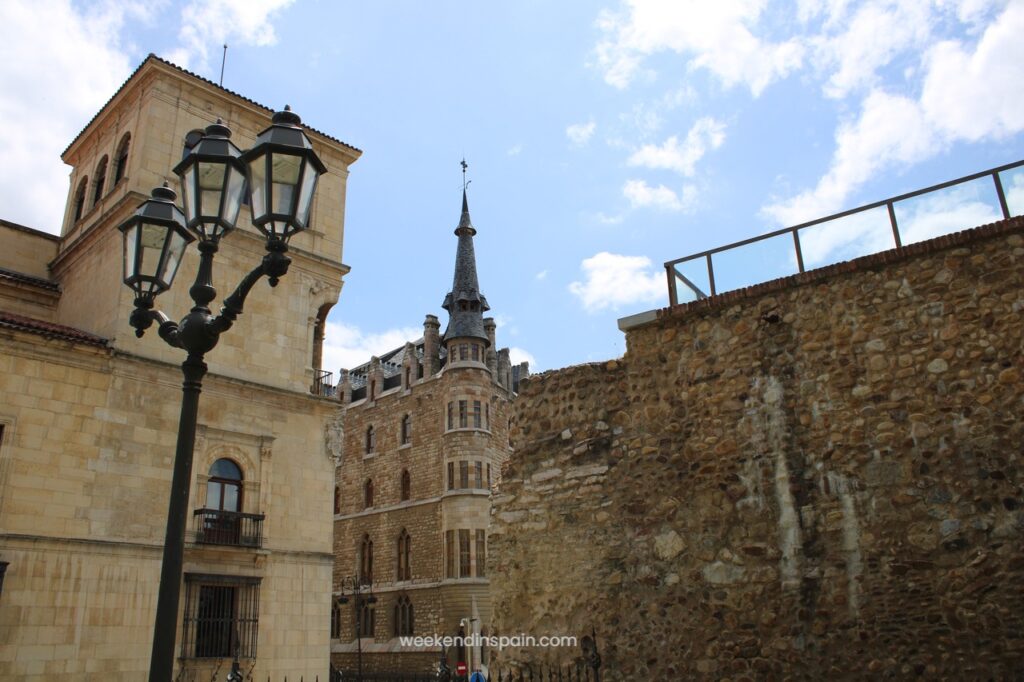
The history of Casa Botines dates back to the 19th century, when Gaudí was recommended by Eusebi Güell from Barcelona to his clients, Simón Fernández Fernández and Mariano Andrés González Lluna, the representatives in León of the Banc Hispano-Colonial de Barcelona and the owners of a foreign exchange bureau and a textile company. Hence, Gaudí designed the building, which would be used to store their textile merchandise and rent out part of the building to Bourgeois families.
Gaudí designed the building whose structure and general approaches follow those of Napoleon III and Baron Haussmann in Paris, i.e., the ground floor for businesses, the basement for warehouses, the first floor for the residence of the property owners, and the upper floors for rent.
ARCHITECTURE
Gaudí designed the building in medieval style, which featured a neo-Gothic style and was reinforced with cylindrical towers topped with pinnacles at each of the corners.
The building has a trapezoid floor plan. Its external appearance calls to mind a medieval castle, though the interior is that of a functional, mixed-construction property with load-bearing walls in the apartments and iron pillars in the commercial areas.
Gaudí gave the ground floor, intended to house warehouses dedicated to the sale of textiles, a new look by replacing the load-bearing walls with slender cast-iron piles.
Gaudí used modern and innovative ideas, which helped him build Casa Botines with creative structural and design elements, which he would apply to some of his future projects, among them the very famous Casa Battló and La Pedrera. In fact, if you visit Casa Battló, you’ll be instantly reminded of the similarity between the apartments and the inner courtyards with those of Casa Botines.
STAIRS AND COURTYARDS
On the upper floors, intended for residential use, the functionality of the double doors (designed to facilitate the movement of furniture), the windows, the funnelled courtyards (which provide the interior with light and ventilation), and the stairs, with their ergonomic handrail, merge with the beauty of the peepholes and beautiful knobs on the doors, forming a magnificent and functional building, modern and revolutionary, as were Gaudí’s creative ideas.
STAINED-GLASS WINDOWS
The Neo-Gothic windows that ensure better lighting and the vegetal motives that evocate the name of the city are the typical elements of Gaudí’s architecture.
On the ground floor, Gaudí designed 30 large windows, open to the four cardinal points, which would enhance the appearance of the textile shop and also provide natural light at all times of the day.
THE TURRETS AND THE MOAT
Both the turrets and the moat give the house the appearance of a fairytale castle, but they also have a practical function. They are designed to bring light and air into places that are normally dark and poorly ventilated. The turrets brighten up and ventilate the corners, while the moat illuminates the basement.
The turrets have a crown of windows opening out towards the city, to provide light to the houses and also to fulfil a social function typical of the bourgeoisie: to see and be seen.
THE APARTMENTS
The upper floors have two and four flats, with staircases on the east-west axis. The rooms are rectangular and have different sizes. At the corners, they are hexagonal and have access to the turret-lookout towers.
DOORS
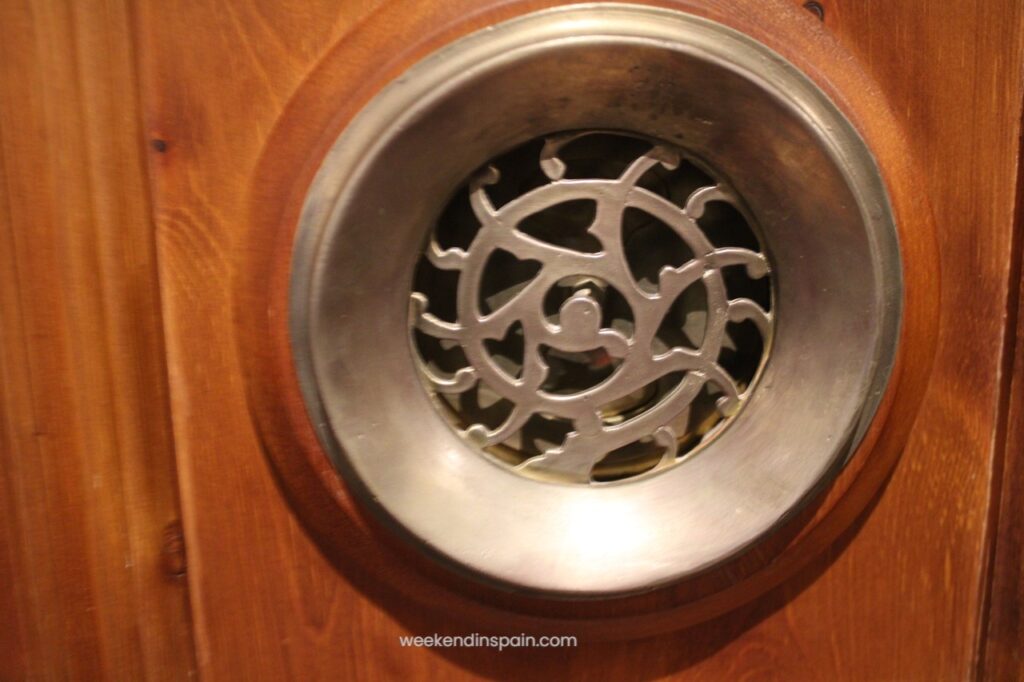
The artist opted for the neo-Gothic style, especially with the use of lobed arches on doors and windows.
FAÇADE
The very moment you see the façade, you realise at once that it’s like a fairy-tale palace, with angular towers on all four corners of the building that are topped with slate pinnacles, giving it a fairytale castle look, and that is what makes both the building and the façade all the more beautiful than they already are.
On the main façade wall is a stone sculpture of St. George, which shows him slaying a dragon with a lance. Surprisingly, the sculpture contained the original architectural plans for the building, signed by Antoni Gaudí. The architectural plan inside the sculpture was only discovered when the sculpture had to be replaced by another replica, as the original was in very poor condition.
ART AT CASA BOTINES
The museum houses an important part of the FUNDOS collection, made up of fine and decorative arts, along with beautiful paintings, spanning five hundred years of art history on the Iberian Peninsula, from the end of the 15th century to the end of the 20th century. You will find lots of paintings and art on the top floors of Casa Botines.
RESTORATION
When Caja España took over the building, it was restored, respecting Gaudí’s designs and correcting the mistakes of earlier renovations. It now houses exhibitions and the offices of the savings bank
ANTONI GAUDÍ SCULPTURE
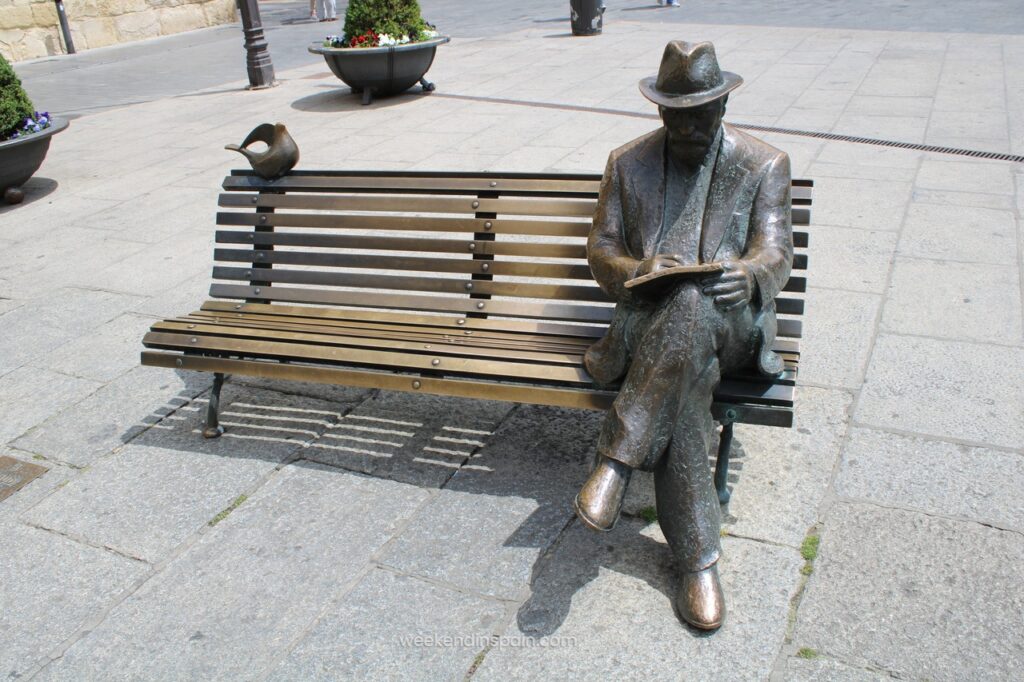
Antoni Gaudí’s sculpture is just in front of Casa de Botines, where he’s seated on a bench, buried in deep thoughts, and drawing and writing down what he’s going to build, as was his much-loved profession.
The bronze sculpture was built by José Luis Fernández.
NATIONAL HISTORIC MONUMENT
There is no history of art or architecture that ignores its originality and its contribution to the world of construction. The building, declared a National Historic Monument in 1969, is an astonishing example of the art of architecture.
CASA BOTINES ENGLISH
When I visited Casa Botines, we had a guided tour in Spanish, although the guide did speak English here and there. In my case, since I’m fluent in Spanish, I didn’t have a problem at all. I suppose they might have tours in English on certain occasions.
CASA BOTINES TICKETS
Here’s an official link to the Casa Botines website, where you can purchase tickets online.
https://www.casabotines.es/visita
In my case, I didn’t buy it online, as I just walked in and was able to buy a ticket with a guided tour on the spot. In any case, if you happen to be in the city on a Wednesday, then you might as well visit the monument on this day as there’s a discount on this day and you only pay 8 euros instead of 12 euros.
TIPS AND CONCLUSION
If you’re ever in León, do visit this precious masterpiece by Gaudí – you won’t regret it. By the way, if for some reason, you’re in a hurry and don’t have enough time on hand, you can still visit the ground floor for free, as well as the store where you can buy interesting souvenirs if you wish to.
Lastly, I’d just like to mention that I have written articles on other monuments by Gaudí that are located in Barcelona, and Sagrada Familia happens to be one of them.
Thanks for stopping by, and stay tuned for more!
